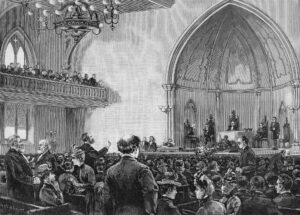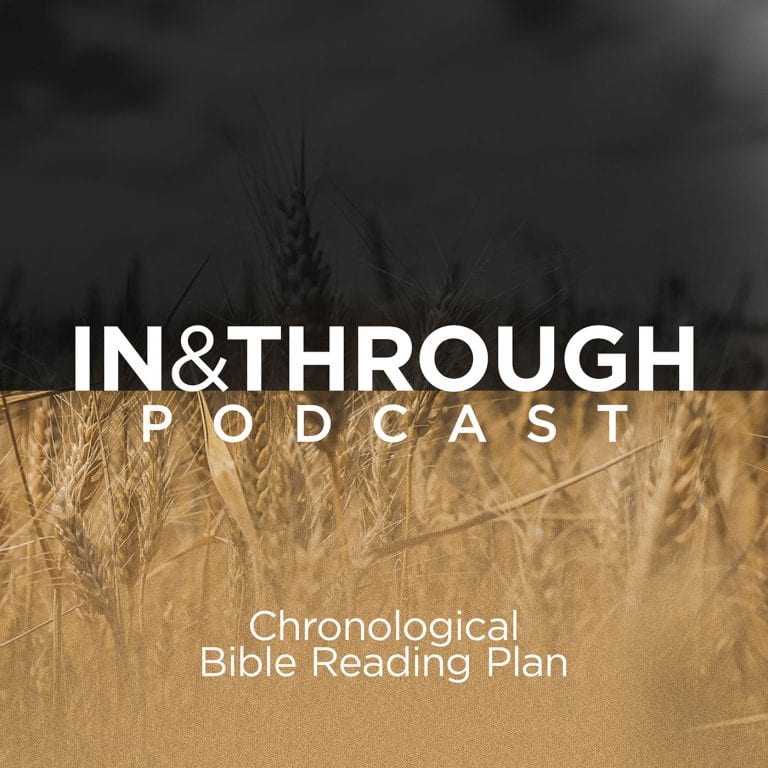We don’t have to look further back than last year to see that we are a people perpetually plagued by fear. What we fear drives what we do—take, for instance, some of the behaviour demonstrated in the 2020 Pandemic. Fear is one of our strongest emotions and motivators. But it is one with which we have an uneasy relationship. When we come to Scripture, we are commanded, on one hand, “do not be afraid,” and on the other, “fear God.” Christians can be surprised and confused by God’s desire that we fear him.
In his new book, Rejoice and Tremble: The Surprising Good News of the Fear of the Lord, Michael Reeves brings much clarity to this doctrine that the church has so often misunderstood. What is the fear of the Lord, and why, as Reeves argues, ought the Christian to delight in it?
Two types of fear of God must be distinguished: sinful fear and right fear. Sinful fear misrepresents God’s character and is not based in love. It drives the sinner away from him in one of two ways: the fearful one either runs away from relationship with God altogether or by takes up a form of religious externalism without joyful delight in him. “This fear,” according to Reeves, “gives people the mindset of a reluctant slave who obeys his master not out of any love but purely from fear of the whip” (34). Even believers can fall into this sinful fear of God when we misrepresent his nature and character in our hearts. Nevertheless, thanks be to God, who has given us his Spirit “to produce in us a wonderful fear that wins and draws us to God” (43).

Rejoice and Tremble: The Surprising Good News of the Fear of the Lord
Michael Reeves
Rejoice and Tremble: The Surprising Good News of the Fear of the Lord
Michael Reeves
According to Reeves, a right fear does not drive the sinner away from God, but toward him in love. This kind of devoted fear is part of the new covenant blessing. To fear God is to love God, know him, and be known by him. Believers who fear the Lord are overwhelmed by who he is and his goodness toward them. This “trembling ‘fear of God’ is a way of speaking about the intensity of the saints’ love for and enjoyment of all that God is … True fear of God is true love for God defined: it is the right response to God’s full-orbed revelation of himself in all his grace and glory.” It “is not a groveling, shrinking fear … It is an ecstasy of love and joy that senses how overwhelmingly kind and magnificent, good and true God is, and that therefore leans on him in staggered praise and faith” (52–53). To fear God rightly is to love him, have joy in him, and trust him.
Reeves goes on to argue that as Christians, we have a proper fear of God in his roles as both Creator and Redeemer. The former has to do with fearing God for his “Godness”: he is holy, supreme, sovereign, and majestic. But Christians have the further knowledge of God as Redeemer in Christ—knowledge of God as kind, gracious, merciful, forgiving, and compassionate. Fearing God as Redeemer leads us to be “freed from all fears that this awesome God might be against us” (76).
In fact, Reeves says, it is wrong for us to primarily think of God as the Creator. Why? Before he was Creator, he existed in the perfect fellowship of the Trinity as God the Father. Therefore, we should primarily view him as Father and fear him with a Spirit-wrought “loving filial fear.” This filial fear is only made possible by the person and work of Christ, with whom the redeemed share and partake in “the Son’s own filial delight in the fear of the Lord” (100). When we call God “Father,” the gospel is richer, but when we primarily present God as Creator, “we rob believers of filial fear.”
So, how does one grow in this fear? It is “a matter of the deeper orientation of a renewed heart—something that causes truly Christian behavior” (109). This is only made possible by the Spirit through the gospel: “only the preaching of Christ can turn a heart truly to desire righteousness and fear God with loving, trembling, filial adoration” (114). The cross is the “uniquely fertile soil for the fear of God” (118); we position ourselves by means of grace to be constantly in contact with the gospel (taking in cross-centered content: books, preaching, and fellowship, and especially Scripture).
Reeves also notes that if leaders are going to lead well, they need to “be clearly affected by the beauty and glory and majesty and goodness of God shown in their life and in their teaching” (125). Our preaching and teaching must do more than give knowledge about God, but “must share the fiery intent of that word, preaching so that sinners tremble and that the hearts of saints no longer creep in dread but quake in wonder” (129). It is only this kind of fear that properly dreads sin, not because of punishment, but for what it is—ugly, ungodly, and defacing to the One we love and treasure.
A believer who is filled with “a right, healthy, filial fear of God” will see this overflow into his life. He will have deeper communion with God because he knows he is loved and accepted as his child. Having the proper knowledge of both God and self will lead to doxology and Christlike character, for filial fear purifies and burns away the dross of sin. The believer will become happy as God is happy, large-hearted as he is large-hearted, and overflowing in sacrificial love as he overflows in sacrificial love. Indeed, “led by the Spirit into conformity with Christ, the church begins to exhibit to the world fearsome divine qualities of holiness, blessedness, happiness, wholeness, and beauty” (153).
The triumph of Reeves’ book is his ability to synthesize a confusing and sometimes alienating topic, to present it in a way that can be easily comprehended, and to do so in a pastoral and God-glorifying way. Whether you are a pastor, scholar, or layperson, this book will foster true, filial fear and cause you to overflow in heartfelt, affectionate worship to our good and gracious redeeming God.
This review was originally published in The Reformation Fellowship Magazine 1 (July 2021): 38–41. Used with permission
























